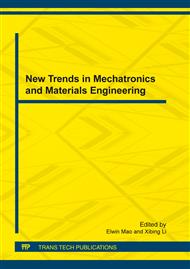p.36
p.41
p.47
p.52
p.57
p.61
p.66
p.70
p.75
Preparation of Fluorocarbon Acrylic Emulsion with Core-Shell Structure Modified by Versatate Carbon
Abstract:
Fluorocarbon acrylic emulsion with core-shell structure modified by versatate carbon were prepared with acrylic acid, versatate carbon monomer(VC), fluoride carbon monomer(FC) and methyl methacrylate as raw materials. The influence of the amount of FC and VC, the core/shell mass ratio on emulsion polymerization were discussed. The structure and properties were characterized by fouriertransform infrared spectrum(FT-IR), transmission electron microscopy(TEM), particle size analysis. The results showed that the emulsion had good properties while w(FC)=8%, w(VC)=6%, the ratio of the soft to hard monomer is 1:3 in core and the soft to hard monomer is 2:1 in shell, the mass ratio of the monomer in core to in shell is 1:1. The conversion of polymerization is 96.5%, the size of latex particle is 100nm, water contact angle of the emulsion film is 100.5°, water-absorption ration of the film is 6.5%. The versatate improved the property of fluorocarbon acrylic emulsion.
Info:
Periodical:
Pages:
57-60
Citation:
Online since:
January 2012
Authors:
Keywords:
Price:
Сopyright:
© 2012 Trans Tech Publications Ltd. All Rights Reserved
Share:
Citation:


